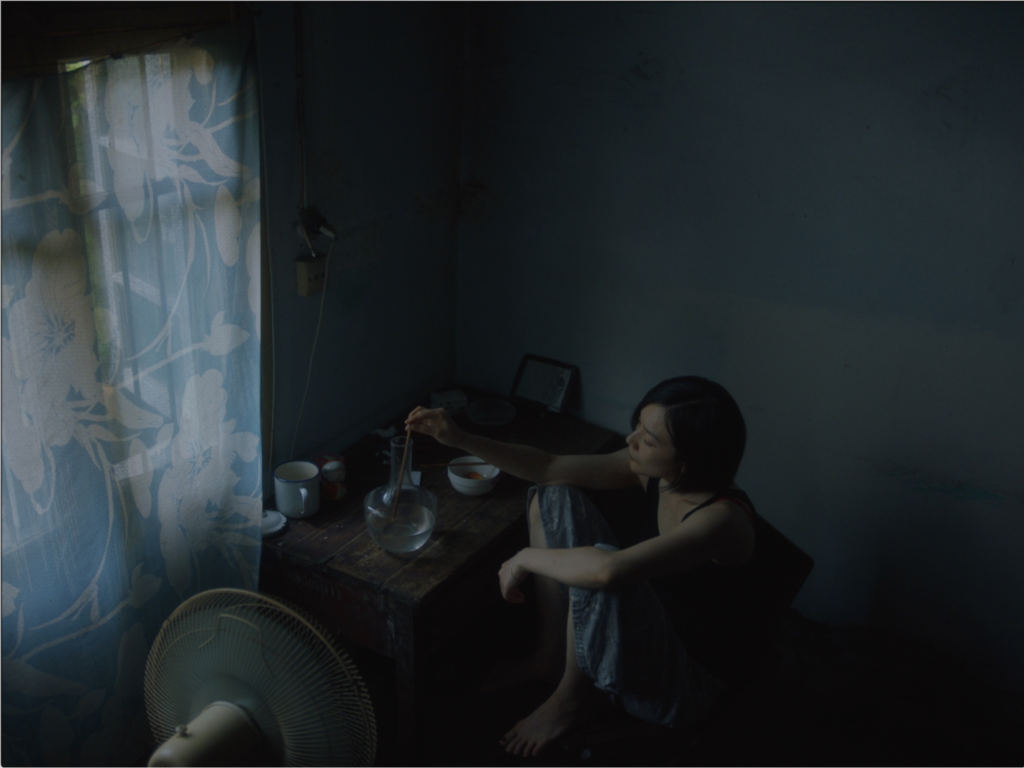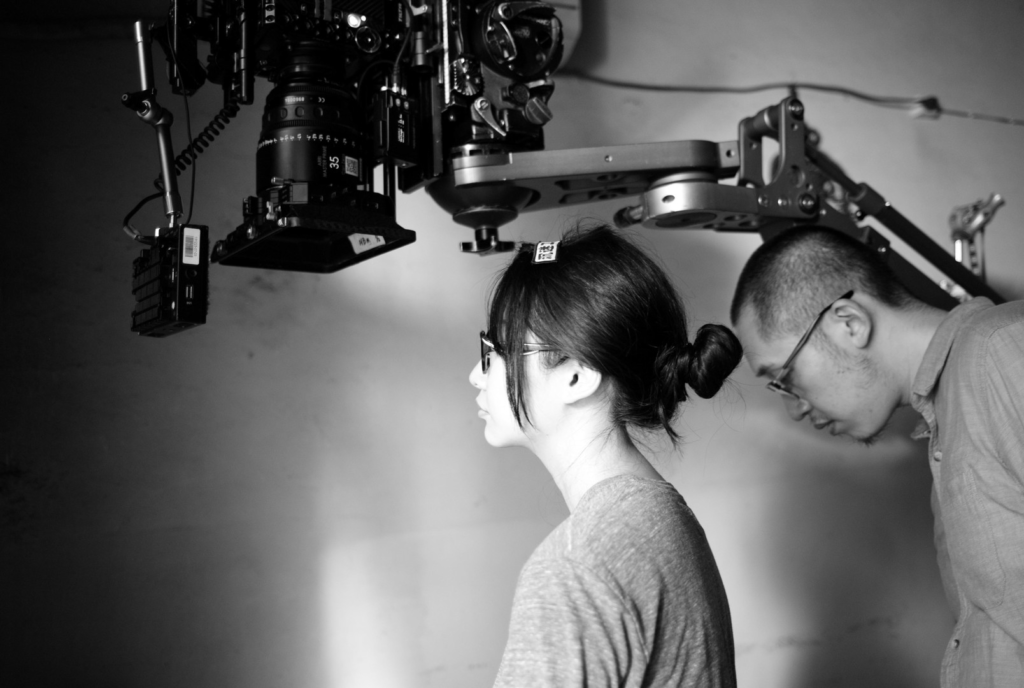
Trusting The Feeling: A Miniflix Interview With Layla Jian Luo
When Layla Jian Luo first started at New York University’s film school, she’d already had two college degrees under her belt – one from her home country, China, and another from Purdue. But as she started her Master’s program, she realized she had lots left to learn and to experience. Through various directing projects and special opportunities (like the Ang Lee scholarship), she finally made her way to her thesis film, and latest short, “What Do You Know About The Water And The Moon”. This magical realistic exploration of abortion and emotional repression has gone on to screen at several big festivals, including Clermont-Ferrand and London Film Festivals.
We talk with Layla about how NYU helped prepare her for directing, the genesis of her newest film and using one’s own sense of story and emotion to make the big decisions about a film’s style and sense of place.
Miniflix Interviewer: How do you think you developed most as a filmmaker during your time at NYU?
Layla Jian Luo: What I learned the most from NYU was hands-on experience. The school really does push you to shoot. We have to do director’s assignments every week and we have to not just be directing but we have to learn every department and work on set. That’s really helpful for me as an independent filmmaker now, because we’re constantly working now on short content where it’s comparatively lower budget to features and commercials. So you really need to know a little bit of everything….
Another thing would be by the time I was in my second year at NYU, I got introduced to Ang Lee’s producer after I got the Ang Lee scholarship. That was a big deal. I got to meet with Ang, one of his Taiwanese producers and his editor. They took me on a studio tour that was 7 hours long. I got to talk with them extensively. They were really interested in me and my future projects.

Still from “What Do You Know About The Water And The Moon”
Miniflix: What was the inspiration for “What Do You Know About The Water And The Moon”?
Layla: The people I grew up with have a low tolerance on topics that aren’t cheerful and flowery. Maybe it is because life is hard enough and full of boundaries. When we get used to not sharing negative, private feelings with our closed ones, publicly announcing those feelings becomes a sin. But is it really? ..but [the making of this film] turned out to be a very rewarding experience just on a personal level because… it got into many festivals and I sent many friends the link to watch. And one friend told me that she watched it and was going through the same thing. She is with a very loving partner but she still feels it difficult to talk about. So she asked me to send her the link so they could watch it together. And afterwards, she told me that it helped them understand each other.
Miniflix: How has the general response been to this movie at the festivals you’ve had the chance to attend?
Layla: It’s received well in Europe. When I went to Clermont-Ferrand in France and London Film Festival, I got good questions and heartfelt, intimate, honest responses from male and female audience members. It also was received well at Palm Spring [International Short Film Festival]. When I screened it in China last year, it went to one of the most respected festivals there called First International Film Festival.

Still from “What Do You Know About The Water And The Moon”
Miniflix: The movie foregrounds water and often moves like water as well. Can you talk about what the conversations were like with your cinematographer, Mingjue Hu, early on, when you were establishing what the look and feel of the film would be?
Layla: It’s never an explicit conversation. Ming and I have been friends for many years, and we’ve been trying to work together before. But this film was a good opportunity for that. Rather than talking about how we want the style of the shoot to be, we’d talk about stories and the protagonist’s journey. What does she think? What does she want?
Then we start asking whether we want the audience to be feeling what she is feeling in that moment. It’s really more of a discovery between me and Ming to try and understand the story better. That’s helpful for me, because sometimes when you write a script, you don’t realize that there are still more ways to develop the depth of the character even if you are the creator. He helps me with that.
Then we would talk a lot about the films we like. So he would send me film references that he thought of when he was reading the script. I would send him lookbooks and other films I’d want him to watch.
In terms of camera movement and framing, it really largely depends on locations. He was not with me before the shoot, so we were doing a long-distance relationship with location scouting. Every weekend, I’d show him the locations, with either videos edited together or storyboarded.
Miniflix: What were some of the film references being passed back and forth?
Layla: We looked at a lot of stills from Ida. We discussed the film Blue from the Three Colors Trilogy. In that film, it was less about cinematography and more about how the director communicates a very intangible emotion and feelings through visual language. I will say that Ming talked me into doing some of the more water focused camera shots. When I visualized the movie, I wasn’t seeing a lot of camera movement, but he brought in his style.

Photo from the set of “What Do You Know About The Water And The Moon”
Miniflix: The ending of this film, with the shot of the light show playing over the skyline, really surprised me. The grand scale of it was particularly striking. It was quite a contrast against how intimate the rest of the film feels. I believe it was also one of the few static shots in the film. Two questions. How was this shot constructed digitally, in camera or both? What were you feeling about this particular ending that you hoped to communicate to us by keeping it in the film?
Layla: For the first question, it was all shot on set. Everything happened in front of the camera. I did zero vfx. It’s just that absurd. The LED lights in particular was why I wanted to shoot in that city – it’s just crazy. It’s hard to believe those lights are just hanging outside of residential buildings…it seemed so absurd and cinematic that I wanted to do something with it. So when this film came along, somehow it just felt right. This is one of the hardest questions to answer for me.
Miniflix: Sure, I understand. For me, the bridge felt very important. The fact that our main character was on the other side of it. There’s this great gap between herself and this massive LED-infused city. It gives off this sense of light and energy but also a sense of isolation and confusion and fragmentation. Since you mentioned earlier that most of your filmmaking decisions come from story decisions, I was wondering how this ending fit into the larger story for you.
Layla: When I played this story in my head, it was always walking on a line between what actually happened and what she thinks happened. She’s the only one speaking Mandarin throughout the film. Everyone else was speaking a Chinese dialect. So in my head she’s not from there. For me, her experience has always been isolated to the extent that she starts to doubt her own experience – hence the jellyfish. So I end the film on a landscape that’s so surreal, that blows her mind – such an unexpected spectacle – and doesn’t feel real.
I was very nervous to end it that way too. When I handed the film to the editor [Colin Elliott], I asked him to do what he wanted and to see if the ending would work. I was prepared for it to not work. I had people telling me that since you’re telling a personal story, you want to end on her face instead of the distant landscape because you want people to remember her. I tried that, but in the end, when I see a cut that lands on the landscape of the city, I had a huge emotional response to it. I trust that feeling and trust how I was moved by it.
To learn more about Layla and her work, go to http://jianluofilm.com/.
